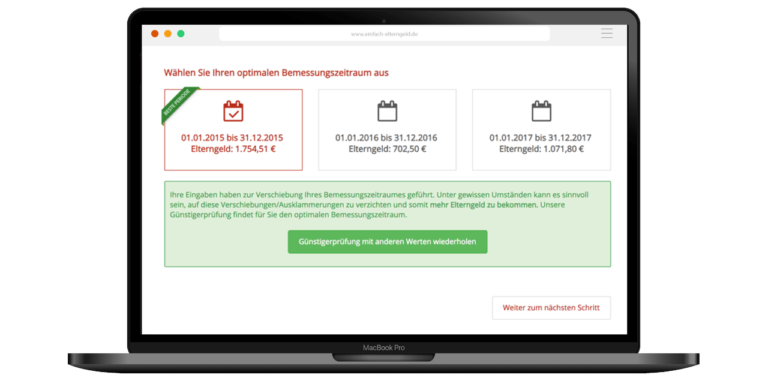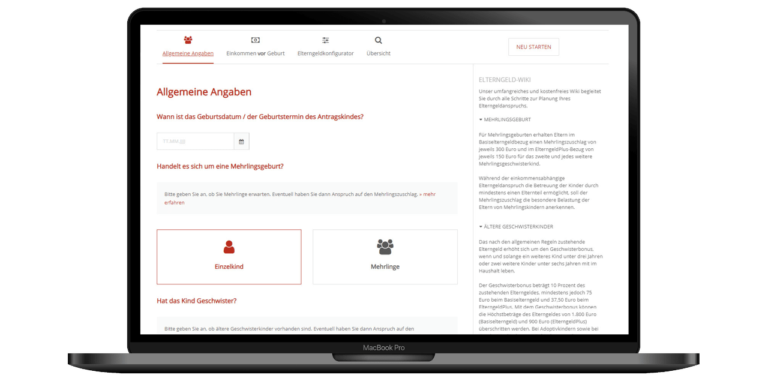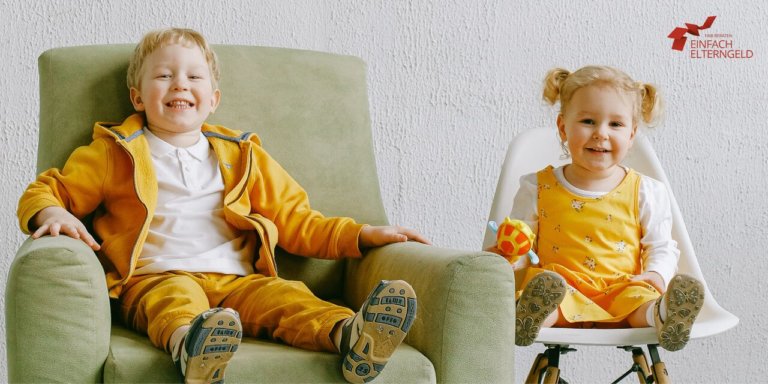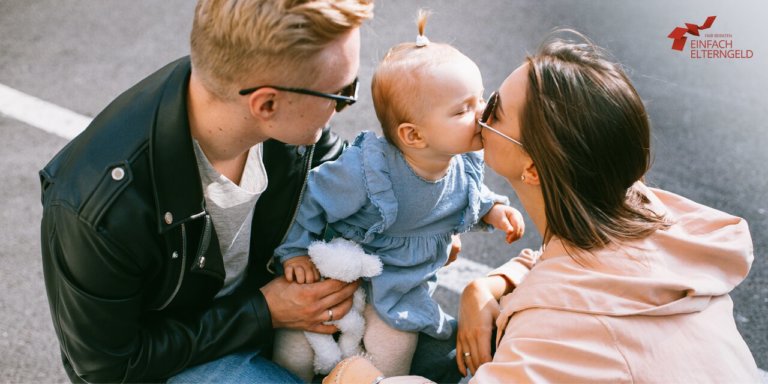Breastfeeding employment prohibition (Still-BV) and parental allowance
On 01.01.2018, the Maternity Leave Act was amended so that the new Section 12 “Impermissible activities and working conditions for breastfeeding women” Maternity Leave Act (MuSchuG) has now come into force and must be observed with regard to parental allowance.
This results in the so-called “breastfeeding employment prohibition” for nursing mothers. In this article, we explain the effects of the breastfeeding employment prohibition on post-natal income and the particularities that need to be taken into account in these constellations when applying for parental leave and parental allowance:
An overview of the most important facts about the breastfeeding employment prohibition and parental allowance
- Mothers who are breastfeeding their child and are not allowed to work for health protection reasons receive a breastfeeding employment prohibition.
- During the breastfeeding employment prohibition, mothers continue to receive their full pre-maternity leave salary
- Breastfeeding employment prohibition lasts as long as the mother can prove that she is breastfeeding and the risk at work is still present.
- Good communication and planning with the employer is enormously important here
- Parental leave and parental allowance should be planned in detail
What is a breastfeeding employment prohibition?
The MuSchG recognizes various types of employment prohibition, in particular
- individual employment ban (usually prescribed by a doctor during pregnancy; § 11 MuSchG),
- statutory ban on employment during maternity leave periods (§ 3 MuSchG),
- statutory ban on employment for nursing mothers with special working conditions (§ 12 MuSchG).
Every employment ban prohibits the mother from working with simultaneous wage compensation. The amount of the breastfeeding employment prohibition pay corresponds to the amount of the average salary of the last three settled calendar months before the start of the pregnancy, see § 18 MuSchG.
How do I get a breastfeeding employment prohibition?
The employer declares the employment prohibition due to breastfeeding as soon as the mother indicates that she is ready for work, but at the same time informs the employer that she is breastfeeding. The latter is usually evidenced by an informal breastfeeding certificate from the doctor/midwife. However, mothers only receive the breastfeeding certificate if their workplace contains unacceptable activities or working conditions within the meaning of § 12 MuSchuG.
The following professions are particularly affected:
- Female dentists,
- veterinarians and
- female pilots/flight attendants
More fields of activity are also affected. The law considers the following activities and working conditions to be impermissible:
Exposed to hazardous substances
Exposure to hazardous substances is listed as the first impermissible activity. The list in Section 12 (1) sentence 2 MuSchuG is not exhaustive and is limited to hazardous substances that specifically lead to an irresponsible risk to the nursing woman or her child. These include, for example, lead or lead derivatives, insofar as there is a risk that they will be absorbed by the human body (Section 12 (1) Sentence 2 No. 2 MuSchuG).
Exposed to biomaterials
The legislator considers a working environment for nursing mothers to be excluded if she comes or may come into contact to a degree with biosubstances of risk groups 2, 3 or 4 as defined in § 3 of the Biosubstances Ordinance. However, if the mother can be shown to have sufficient immune protection, the risk is considered to be excluded.
Physical influences
Physical influences in the sense of the law are working environments in which one is inevitably exposed to ionizing and non-ionizing radiation, because they can have a not insignificant effect on lactation.
Stressful work environment
Although a work environment can certainly very often be subjectively perceived as “stressful,” the legislature is targeting this standard in particular at activities in which the mother is either employed
- in rooms with an overpressure in the sense of § 2 of the Compressed Air Ordinance or
- in underground mining
Other
In addition to the aforementioned characteristics, the legislator classifies the following activities in particular as impermissible:
- Piecework or other work in which a higher rate of pay can be obtained through an increased work rate
- mass production work
- clocked work with a prescribed work pace if the type of work or the work pace poses an irresponsible risk to the breastfeeding woman or her child.
How do I find out if I am eligible to breastfeed employment prohibition?
First and foremost, it is the employer’s duty to check a possible employment ban as part of its duty of care (occupational health and safety). This applies in principle to any form of employment ban. If the employer’s legal opinion on the breastfeeding employment prohibition differs from that of the mother, the mother will probably only be able to assert her rights under the Maternity Leave Act with legal assistance. The breastfeeding certificate from the gynecologist or midwife alone is not sufficient to obtain a ban on breastfeeding, as it only certifies that the mother is currently breastfeeding.
Tip:
Talk to your employer. If available, involve the colleague responsible for occupational health and safety in the discussion. Point out that the employer is reimbursed 100% by the health insurance fund for the breastfeeding employment prohibition pay as part of the pay-as-you-go procedure and is therefore at least not financially burdened. It can be helpful to have constructive suggestions as to how your absence can be well absorbed in the company.
*The employer is entitled to reimbursement from the statutory health insurance funds for expenses incurred in this regard (U2 procedure). Upon request, the pay-as-you-go funds will reimburse the employer in full for the remuneration paid to the breastfeeding woman in accordance with Section 18 of the Maternity Leave Act (MuSchG) in the event of a ban on employment (maternity leave payment) as well as for the employer’s share (Section 1 of the Compensation of Expenses Act (AAG)).
Download material for the employer
The specialist group for maternity protection from Baden-Württemberg has published a sample for a risk assessment. The focus of the risk assessment here is the activity in a dental practice, but the content is certainly helpful for other affected persons.
We particularly recommend the checklist for risk assessment so that employers can assess the situation at the workplace well and thus meet their record-keeping obligations vis-à-vis the social insurance agencies.
How long does the breastfeeding employment prohibition last?
The question is actually easy to answer: As long as you can prove that you are breastfeeding and the hazard would still be present in the job.
But:
Health insurers, public authorities and sometimes even employers make the erroneous assumption that the on breastfeeding employment prohibition is limited to the first year of the child’s life. In some places, health insurers are therefore no longer prepared to reimburse the employment prohibition pay from the 13th month of life onwards, which means that the employer would be left to bear the costs.
However, § 7 MuSchuG, which is often referred to in this context, regulates the mother’s leave of absence due to breastfeeding (for example, granting breaks for breastfeeding/pumping), which is limited to the completion of the 12th month of life.
However, § 12 MuSchuG explicitly deals with health protection and this is not limited in time. In case of doubt, the employer must assert the reimbursement claims in court against the health insurance fund (§ 18 MuSchuG in conjunction with § 1 para. 2 no. 2 AAG).
This very issue has now been the subject of a court case. The Social Court of Frankfurt (case number: S 34 KR 2391/20 ER) has ruled that an employee who continues to breastfeed her child beyond the age of one and therefore does not work is not entitled to maternity leave payments (Still-BV Entgelt), if there is no medically certified prohibition of employment for the breastfeeding period.
The employer operates a dental practice for aesthetic dentistry in Frankfurt am Main. He is claiming reimbursement from the statutory health insurance fund of his employed female dentist of almost 200,000 euros for the payment of a monthly maternity leave payment of almost 25,000 euros since March 2020, as his employee continues to breastfeed her child, born in March 2019, beyond the age of one and is therefore not allowed to be employed. The health insurance company refused to reimburse the payment because the Maternity Leave Act provides for protection of the breastfeeding woman by granting breaks from breastfeeding only within the first twelve months after the birth.
In the opinion of the Social Court, there was no evidence of a ban on employment during the breastfeeding period. The employee had not been able to submit a medical certificate on the specific extent of breastfeeding and any health hazards arising from her work as a dentist. Even with the affidavit requested by the Social Court, she had not been able to substantiate any specific breastfeeding times during her working hours, especially since her child was cared for in a daycare center during the day.
The applicant had not been able to prove that a change in the working conditions to avoid health risks to his employee was not possible or was unreasonable due to disproportionate effort. Why an employer would accept without further ado the non-performance of the contractually owed work while at the same time continuing to pay such a high salary was not at all clear to the Social Court.
Tip:
This decision regulates an individual case and is therefore not readily applicable by analogy to all affected cases. It is clear from the reasons for the decision that the mothers concerned should, at the latest on the child’s first birthday, provide a medical certificate and concrete evidence of breastfeeding (possibly with confirmation from a midwife?). In addition, it can be counterproductive to place the child in outside care during the breastfeeding employment prohibition. The employer should keep a good record of the risk assessment and also be able to present (record) a use assessment of the employee at other workplaces. This effort should probably be done on a regular basis. The decision can be found at text publication. We do not currently know whether an appeal has been filed against the decision.
Positive ruling of the Nuremberg Social Court (S 7 KR 303/20, dated 04.08.2020)
In this case, the owner of a dental practice initially objected to the decision of the health insurance fund that maternity leave payments should only be reimbursed for the first year of the child’s life, and then filed a lawsuit on the grounds that the breastfeeding period is not limited to one year under the Maternity Leave Act (MuSchG). Therefore, the health insurance fund also had to reimburse maternity leave payments to its employed dentist for the period after the child’s first year of life.
The Social Court ruled in favor of the employer and explained in detail which aspects employers must pay attention to in order to receive reimbursement from the health insurance funds even after the child’s first year of life. In particular, it is a matter of protective measures that practice owners are obliged to examine in a certain order:
- The employer shall redesign the working conditions for the pregnant or nursing woman by means of protective measures in accordance with Section 9 (2).
- If the employer cannot eliminate irresponsible hazards for the pregnant or breastfeeding woman by redesigning the working conditions in accordance with number 1, or if redesigning the working conditions is not reasonable due to the demonstrably disproportionate effort involved, the employer shall assign the woman to another suitable workplace if he can provide such a workplace and this workplace is reasonable for the pregnant or breastfeeding woman.
- If the employer cannot eliminate irresponsible hazards for the pregnant or breastfeeding woman either by taking protective measures in accordance with number 1 or by changing the workplace in accordance with number 2, he may not continue to employ the pregnant or breastfeeding woman.
If protective measures or a change of workplace are not possible, the employer must therefore issue a ban on employment. In the decision of the Nuremberg Social Court, a residual risk regularly existed in a dental practice even with protective measures: a risk of contracting serious diseases and hazards when handling biomaterials, hazardous substances and ionizing radiation could not be ruled out.
The view would not be changed by protective measures such as gloves, face masks and safety goggles. The employee in the dispute would also not be allowed to be assigned activities such as co-coordinating appointments, billing management, educating patients before medical procedures, or the like. This is because these activities do not fall under the job profile of a dentist as agreed in the employment contract, but rather tend to be those of a dental assistant. Assignment of the breastfeeding employee to these key activities would practically provoke accusations of discrimination in the event of a dispute.
However, the Social Court expressly clarifies that the plaintiff’s dental practice is not a large practice or even a dental clinic, where the factual situation would be different and jobs could possibly be created where a risk to the nursing dentist would be excluded.
In the case of the ruling, the Social Court of Nuremberg thus concludes that a limitation of the reimbursement of the maternity leave payment to one year cannot be justified on the basis of Section 18 of the Maternity Leave Act (MuSchG), because this explicitly does not provide for a time limit. Contrary to the view of the defendant health insurance fund, the time limit of twelve months contained in Section 7 (2) MuSchG could not be applied to cases of a ban on employment. A ban on employment is not comparable with the leave of absence for breastfeeding regulated in § 7 MuSchG. In this type of leave, there is a workplace for the breastfeeding employee, whereas in the case of a ban on employment, there is no such workplace.
No abuse of rights by the breastfeeding employment prohibition
Critics of the breastfeeding employment prohibition argue that the employment prohibition would create “false incentives” and that breastfeeding the child would be used as an opportunity to take advantage of the financially more attractive maternity leave payment instead of the parental allowance, which is limited to EUR 1,800.
With reference to the case law of the European Court of Justice, however, the Social Court takes a rather clear stand against this. The demand of the defendant health insurance fund that the employee apply for parental leave is rejected. This would namely
“lead to an obligation (!) for the breastfeeding mother to take parental leave, regardless of her highly private, intrafamilial planning, and she would be forced out of the labor force for health protection reasons.”
At this point, reference should be made to the case law of the Federal Constitutional Court: “It” (note: in the case of the cited decision, the unequal treatment of single-earner and double-earner marriages) is, on the contrary, likely to favor housewife marriages in social reality. This, in turn, is contrary to Article 3 II of the Basic Law, which prohibits the codification of traditional role distributions to the detriment of women. In addition, if the legislature wishes to comply with the requirement of Article 6 I of the Basic Law, it must avoid regulations that are likely to interfere with the spouses’ free decision on the division of tasks within the marriage.
On the other hand, employees who are breastfeeding are “only” subject to the special protection against dismissal pursuant to Section 17 (1) of the German Maternity Leave Act (MuSchG) for four months after giving birth. If the employer and employee do not reach an amicable agreement, the employment relationship can then be terminated in accordance with the regulations. If, on the other hand, the employee has applied for parental leave, she cannot be terminated from the time of the application and during the entire parental leave due to the special protection against termination of parental leave.
How do I apply for parental leave when I go to the breastfeeding employment prohibition?
Parental leave is the legal entitlement of employees towards the employer to be released from the obligation to work in favor of child care and upbringing. In the case of a breastfeeding employment prohibition, in turn, one indicates to the employer one’s willingness to return to work after maternity leave, who therefore issues a ban on employment in favor of health protection due to breastfeeding, which applies as long as the mother is breastfeeding and the “danger” is present.
Because of this, one does not apply for parental leave in the case of a breastfeeding employment prohibition. It becomes difficult if the mother wants to go on parental leave after the end of breastfeeding. It is in the nature of things that the end of breastfeeding cannot be firmly “planned/determined”. This makes it almost impossible to meet the 7-week deadline of the Parental Leave Act. The solution here is close and, at best, positive communication with the employer. If the employer agrees to the parental leave application, there is no need for a 7-week period.
Example from our consulting practice:
A female dentist would like to breastfeed until the completion of the 18th month of life and agrees with the employer after the birth that she would like to start working again after the second birthday. She receives a breastfeeding employment prohibition and proves it monthly with a certificate from the gynecologist.
Now her child is breastfeeding on her own in the 14th month of life. She contacts the employer that she is going on parental leave at the next possible date. The employer certifies/approves her for parental leave from that time until the child is 2 years old. The 7 week period did not have to be observed because the employer agreed and they came to an agreement.
Notice:
Periods of maternity leave count as parental leave. Therefore, anyone who wants to take parental leave as long as possible after the breastfeeding employment prohibition does not usually have 36 months available, but must subtract the minimum of 8 weeks for maternity leave after the birth from the 36 months.
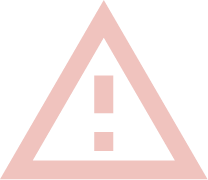
How do I apply for parental allowance if I am on a breastfeeding employment prohibition?
Breastfeeding employment prohibition is considered gainful employment in parental allowance law. Thus, anyone who worked more than 32 hours per week before maternity leave and now receives breastfeeding income on this basis is not entitled to parental allowance.
Those who receive their breastfeeding employment prohibition on the basis of a part-time job of less than 32 hours per week are therefore entitled to parental allowance, but must expect noticeable reductions (possibly to the minimum amount: 300€ in the basic, or 150€ in the parental allowance plus payment). This leaves two options:
Take parental allowance according to the breastfeeding employment prohibition
Parental allowance can be applied for following the breastfeeding employment prohibition. However, it should be noted that basic parental allowance can only be applied for up to and including month 14. After that, i.e. from month 15, you can only apply for parental allowance plus.
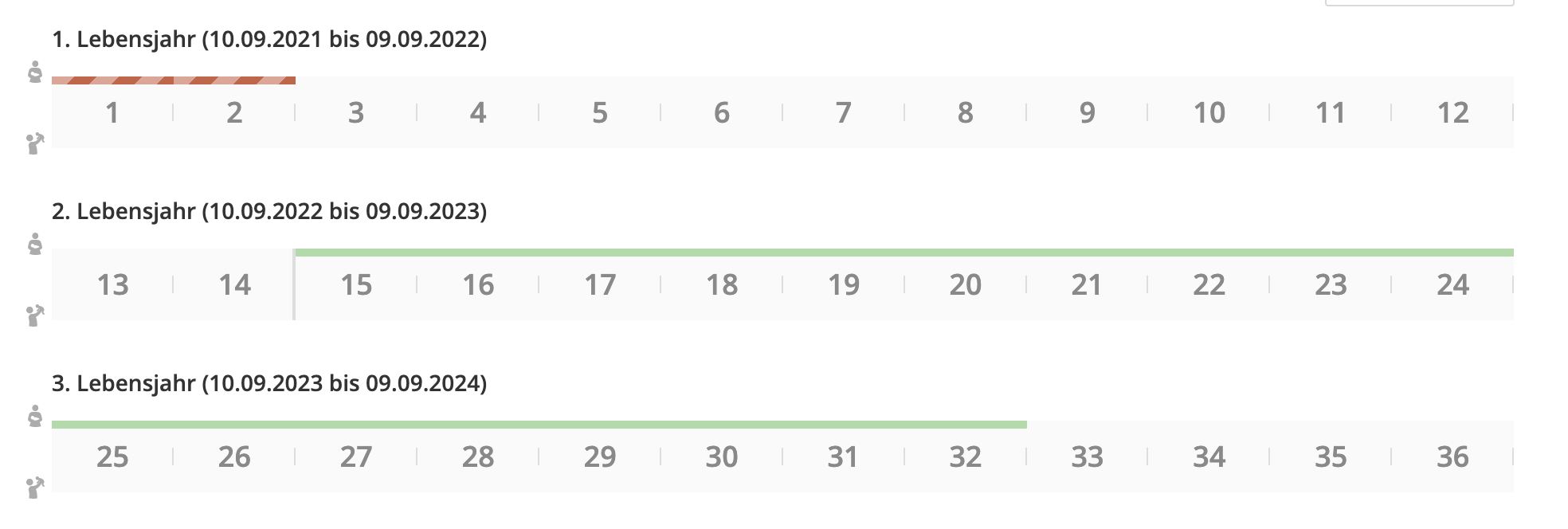
Notice:
From the 15th month of life, there must be no gap in the parental allowance. This means that you have to start at the 15th month of life at the latest. Unless the partner steps in during the gaps or one agrees on a part-time arrangement from 15th month of life, so that one is entitled to parental allowance in the meantime despite breastfeeding employment prohibition.
Since the last parental allowance reform (affects parents of children born from 01.09.2021), parental allowance receipt is limited to the 32nd month of life, so by then the total entitlement should be planned.

The partner takes over the focus
We repeatedly experience cases in which the mother receives the breastfeeding employment prohibition and the father takes parental leave and receives the basic parental allowance. Depending on the level of the family’s pre- and postnatal income, this option can make a lot of sense. Of course, a mixture of the two options can also make sense if, for example, the father can/wants to take parental leave for a maximum of 6 months.
Notice:
In terms of legal history, the regulations on breastfeeding are still relatively young. As a result, there is a lack of experience in the application practice of employers, health insurance companies and parental allowance offices. Each case is unique and can be very complex in places. Therefore, we invite you to consult us in the context of our Parental allowance consulting to accompany you professionally.

FAQ
-
What is breastfeeding employment prohibition?
-
How do I prove that I am breastfeeding for the breastfeeding employment prohibition?
-
How long does the breastfeeding employment prohibition last?
-
Can I receive parental allowance during the breastfeeding employment prohibition?
-
Am I eligible for breastfeeding employment prohibition if I am not vaccinated against Corona?
You might also be interested in

